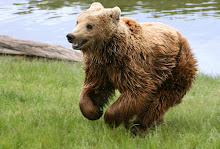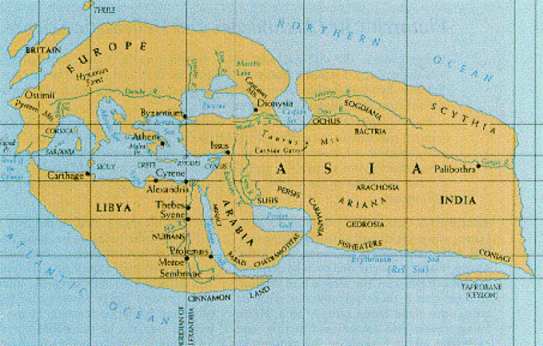Experiences/Lessons learned:
Campaign.
The Campaign was supposed to be a historical campaign running the course of 10- 12 sessions and drawing on my knowledge of Roman and Danish history. Hopefully being both amusing and letting players see new aspects of these. In order to facilitate this I provided short literature and link lists and used books about the prehistory of Denmark as sourcebooks.
It is questionable to which extent I succeeded, we laughed a lot and it is my impression that some players did in fact read a bit more of Rome. The many similar prehistoric Germanic names and places confused players to some extent, I hope the list of NPCs helped.
Most NPCs also seemed a bit hollow and stereotypical, but with so few sessions, it was hard to build the details of more than a few NPCs in the players' minds, and easier to rely on stereotypes and/or only a few NPCs.
One problem was that the campaign stretched out to 16? 17? games instead, one session was added because I planned badly. But four or five others were because we spent much time eating and having fun, or by dealing with other issues, and only got through half a session as planned; often playing effectively only two hours. This is a balance, for do we emphasise gameplay or fun? Ideally both. But I guess I will have to enforce some more focus in the future, not as much as the last Rocketman games, but more than this time.
I should probably also be less lazy and better prepared, but the lack of planning also allows me to change things underway if players wish to drop in or out, etc., but with better planning, it might have been easy to keep focus.
In any case, I had fun, so if the players did as well, I will run Chapter Two at a later date, this will take place back in Rome and entail political intrigues, lawcourts, mercantile competition and foul murder.
Figures and Buildings.
I am too poor and too lazy. Ideally I would have bought many more figures (though it is very hard to find proper Germanic figures that are not stereotypical). I could not afford that.
Ideally I would also have had those I bought, painted and the building finished in detail well ahead. I did have time, but I was lazy; I am that. I need to either focus more or take it into account. My lack of funds I can do little about.
The Players.
The usual core crew. As usual Jan took a leading role, and had the lead character. There was less of the brain-teasing challenges with intrigues and details than Oleg likes, but with campaigns planned for 10- 12 sessions to travel most of Europe, there was little I could do to include this, only in Gaul/Belgae was there some, but Lvcivs behaved like Alexander and cut the Gordian Knot instead of unravelling it.
Feedback on your various (gaming) wishes is welcome, gaming should please all.
The last battle.
See figures and buildings above.
The special rain rule was also messy, especially as it was not really implemented as intended.
Two other problems arose, one was our late start; Gøeg having forgotten that it was Thursday and showing up pretty late (welcome to the “wonderful world of unemployment where all days are the same) and my slow preparation of forces added up to a start somehere after 20.00. Both these conditions are easily remedied. Gøeg will get used to unemployment and if I am smart, I turn up earlier to prep forces.
The other was that we fought two separate battles on each side of the Longhouse. In itself not a problem (except for the sequence of play that tends to get warped) and a recurring event, as long as there is at least one experienced player in each seperate battle and the sequence is followed; it is no prioblem. This time, however, Jan had forgotten the very important fact that Warriors vs Soldiers has a special rule; having run lots and lots of games involving soldiers and warriors I had thought he would remember, but those games are a long time ago, and we have had a long break with Real Life thrusting much on him these days. S**t happens. However, to avoid such, I will probably function merely as umpire in the future.
Oleg sent the following comment in an email Friday (thanks).
Firstly: thanks for a game.
Anyway...
We started a bit late. I'm not sure why, but setting up took ages. I tried to get the food ready in good time, and Geog coming a little late didn't really make much of a difference. We could have done with 30-45 minutes more at the end. Sorry I had to go, but Peter was passing out.
The fighting looked reasonably balanced, but.
(E-Off) Warriors are seriously shit hot.
The Romans were outclassed by *armoured* Warriors ((S) Romans with mail, shield, several pila (pl. ?), and those stake things (which make Difficult terrain in which Warriors cannot quick kill) will eat Warriors with shields. Ordinary Romans meeting Warriors with about the same equipment, in Rough terrain will get killed (although the Warriors will lose cohesion).
The 10" rule was... fuzzy.
We ended up fighting 2 battles. This was probably realistic. From my point of view it was great, but it meant that Palle wasn't thinking about the Geog / Jan fight. The 2 fights got out of sequence (or, they almost did, several times). More to the point, Geog is not experienced withh Warriors v Soldiers, so he didn't know / remember about the quick kills. I didn't notice. Unfortunately, neither did Palle.
A printout with the figure stats, but also relevant rules, special rules, and terrain definitions for that game is a must. We should *always* do this in future.
So, who won in the end, and how?
I liked the longhouse. The roof especially looked good (admittedly I would have weathered it (I know it was supposed to be newish), but that's me. I love weathering). It was, I bet, fairly quick as well; therefore efficient (also, not warped significantly).
What I didn't like is a mistake that we have all made to some extent, and learned quickly: models have to be designed for figures to move around in. This means:
Doorways / gaps ideally 25 mm wide (22-23 may be good enough), and outrageously tall. Jan and I use 50-55 mm per storey. There is a reason.
Avoid too many internal pillars and cross beams. Even door tops (lintels / arches) are optional.
Use a scale of around 15 mm : 1 m... and then make buildings wider than they should be.
Walls can be dead thin, though, so the overall buildings look as well as possible.
Much is addressed above, but.
Háriáwulf is supposed to be sh*t hot, more so than even the other sh*t hot warriors. As you note, on the scale we do things, equal numbers of equally skilled Warriors will defeat Romans in the open or terrain. Fortunately for Rome there are not that many equally skilled and equipped Warriors even in the entire Sweboz tribe, and when it comes to field fortifications, logistics, etc., they are like children. Háriáwulf is about as skilled as it gets and his best men as disciplined as they go, and though he does organise logistics as well as possible with the means available, he does not build field fortifications (he would love to, but no chance his men will, they are warriors- not slaves) and he does not have Roman roads and ships. Nor do they have Pilae. And should it come to siegecraft...
A Printout is a very good idea, do you have the Skirmish Rules in writing? I asked for them online a long time ago, but if they were put there I forgot. I would appreciate a copy so I can cut and paste relevant sections and add any special rules and stats for individual games as handouts. Excellent idea.
Thanks, the Longhouse will be weathered in time, I was lazy, sorry. I also cannot decide what colour the woodwork should be, if any. I might also take it apart and put it together again in a less-correct-but-easier-for-gaming-purposes way. Though I doubt if we will ever use it again.
Tuesday, 7 September 2010
Subscribe to:
Post Comments (Atom)


_running.jpg)







I think one of the ways around the problem of length would be to cut the campaign down into chapters. I would have done it thus;
ReplyDeleteCh1; Rome. Characters solve the mystery of a murder, discover a treasure, a clue leads to Gaul.
Ch2; Gaul. Characters have arrived (don't bother with intermediate travel) but find clue to be ambiguous, a new mystery transpires however, possibly a missing person or an artefact that ust be identified using local resources and a second clue leads to Germania.
Ch3 Germania. Charcaters arrive in Germania and must finally solve mystery of treasure.
Pirate battles are good enough idea's but not twice in a row and entertainment levels are always boosted by fairly decent models. I'd have possibly run the pirate battle as a conclusion of ch2.
In each chapter, I'd have kept the list of NPC's to a managable minimum and I'd have given each NPC a name unlike the others. Even after I'd looked at the list of NPC's I was still unsure who was who due to the strange spelling and the similarity of names. Hariawulf was the only name I could remember. Evey one else seemed to be called Wrofflewolf.
The long house model was fair enough as a model of a long house but was almost useless as a wargaming model due to the clutter of beams and pillars within. It was inspiring to a certain degree, but ideally you should have compared it to our existing models for maximum effect if that was what you are aiming for.
Painting figures is time consuming. My plan is to keep to those figures I have bought as being as generic as possible. NOrmans, Saxons, Knights and peasant archers are all generic enough that they cover a great many styles and periods. I'd like to do Romans too, but the problem with Romans is they aren't all that fantastic for small scale games and they aren't generic enough to stand in for other periods.
My last observation is the premise of the game as you describe it. I'm not interested in history lessons how ever well meant. A role playing game is a fiticious narrative or it is nothing, and whilst historical accuracy can certainly be a detail one appreciates, it isn't anything I personally care for as the premise of a game. I'd much rather play a game with a good story but which was loosely based on history than a game with a poor story, based on historical accuracy.
If you intent to run a second campaign, my advice would be to plan it on paper, building models and painting figures before hand and allowing them to be a source of inspiration. Look to exterior sources for a good, easy to execute story and then steal the ideas. Crime fiction, Agatha Christie novels or mystery films are all great places to find stories that can easily be adapted to new characters and a new setting.
This campaign was better than your last one though. The story whilst muddled and confusing in the specifics was generally clear enough. There was a treasure and we were looking for it. The scope of your ambitions were let down by the verbosity of your player information and the general lack of preperation however. On the whole, this was your best campaign yet.